Experimental research on heat dissipation at the hot end of semiconductor refrigeration chips
Автор: Cai Feng, Levtsev Aleksei, Lu Lin, Chen Pengzhou
Журнал: Бюллетень науки и практики @bulletennauki
Рубрика: Технические науки
Статья в выпуске: 6 т.9, 2023 года.
Бесплатный доступ
TEC1-12705 and TEC1-12706 two types of semiconductor refrigeration chips were designed with different hot-end heat dissipation conditions. At the same time, a test device for heat dissipation of heat pipes for heat sinks with separate current input and two-stage refrigeration was designed, and the influence of hot-end heat dissipation conditions on cold-end temperature was analyzed. The test results show that the cold terminal temperature of the semiconductor refrigeration sheet is related to the heat dissipation capacity of the hot terminal. Under the condition of limited heat dissipation capacity, the cold terminal temperature decreases first and then increases with the increase of the input current; and under the condition of ensuring the heat dissipation capacity, the cold terminal temperature decreases with the increase of the input current and decreases with the decrease of the hot terminal temperature. The two-piece TEC1-12706 semiconductor refrigeration sheet adopts two-stage refrigeration with separate current input, and the minimum temperature of the cold terminal can reach -36,8°С. The test results show that improving the heat dissipation conditions of the hot end can improve the performance of a single semiconductor refrigeration sheet. At the same time, under the best heat dissipation conditions, the use of separate current input two-stage refrigeration can greatly reduce the temperature of the cold end, which is of great significance to improve the working temperature difference of the semiconductor refrigeration sheet.
Semiconductor refrigeration, thermoelectric cooler, heat dissipation, two-stage refrigeration
Короткий адрес: https://sciup.org/14128002
IDR: 14128002 | УДК: 621.314.632 | DOI: 10.33619/2414-2948/91/52
Текст научной статьи Experimental research on heat dissipation at the hot end of semiconductor refrigeration chips
Бюллетень науки и практики / Bulletin of Science and Practice
UDC 621.314.632
Semiconductor refrigeration, also known as thermoelectric cooler (TEC), is a discipline developed from the 1950s on the edge of refrigeration technology and semiconductor technology. It uses P-N junctions composed of special semiconductor materials to form thermocouple pairs and produce the Peltier effect. That is, a new type of refrigeration method through direct current refrigeration, together with compression refrigeration and absorption refrigeration, it is called the world's three major refrigeration methods [1]. Semiconductor refrigeration has: no refrigerant, no moving parts, and good environmental protection; when cooling at low power, the cooling coefficient is high; the cooling speed is fast, the reaction is agile, and large temperature differences and precise temperature control can be quickly achieved; it can be made into various shapes, easy to miniaturize, and meet various needs [2-3]. Obviously, semiconductor refrigeration has opened up a new field of refrigeration technology and expanded the scope of application of refrigeration technology. In some special occasions, it has a role that cannot be replaced by other refrigeration methods [4]. However, at the current material level, the maximum energy of semiconductor singlestage refrigeration can reach a temperature difference of about 70K [5-6].
Semiconductor single-stage refrigeration not only cannot achieve a larger temperature difference, but also when working under a larger temperature difference, its refrigeration coefficient drops rapidly, and the refrigeration conditions deteriorate rapidly. Strengthening the heat dissipation of the hot end is currently one of the main means to improve the refrigeration performance of semiconductor [7-9].Relevant scholars have done relevant theoretical research on the heat dissipation of the hot end of semiconductor refrigeration [10], and at the same time have done experimental research on liquid cooling and heat dissipation [11], heat pipe heat dissipation [12], evaporative cooling and heat dissipation [13], and optimized design of heat dissipation at the hot end [14]. The researchers conducted experimental research on the improvement of heat dissipation at the hot end. The test results can improve the cooling performance of the semiconductor refrigeration sheet and obtain a lower cold end temperature, but the minimum temperature at the cold end is relatively limited, and it is difficult to meet the requirements of large temperature difference conditions. In this paper, the hot end heat dissipation of a monolithic semiconductor refrigeration sheet is tested and studied. Through the test results, the influencing factors of the semiconductor hot end heat dissipation on the cold end temperature are analyzed. On the basis of its optimal heat dissipation conditions, a two-stage cooling and heat dissipation test study with separate current input is further used to obtain a lower cold end temperature. The two types of semiconductor refrigeration chips TEC1-12705 and TEC1-12706 were tested for forced convection of heat sinks without heat pipes and forced convection of heat sinks with heat pipes. The device is mainly composed of semiconductor refrigeration sheet, adjustable power supply module, power adapter, power voltage regulator, thermal insulation material, thermal grease, radiator, thermometer and wire and other equipment. The detailed information of the device is as follows:
-
1) Semiconductor refrigeration sheet: TEC1-10275 size 40×40×3.8 mm, rated voltage DC12V, maximum voltage 15.4V, maximum current 5A, maximum cooling capacity 55W, maximum temperature difference 670С (hot terminal temperature Th = 270С ambient temperature = 270С under maximum voltage conditions); TEC1-12706 size 40×40×3.8 mm, rated voltage DC12V, maximum voltage 15.4V, maximum current 6 A, maximum cooling capacity 60W, maximum temperature difference 670С (hot terminal temperature Th = 270С ambient temperature = 270С under maximum voltage conditions);
-
2) Power adapter: HKA150120A0-7C, 12V10A, maximum output power 120W; Adjustable power module: LM2596S, the output voltage is continuously adjustable from 1.25 to 32V, the output current is 0~5A, and the maximum power is 75W;
-
3) Power supply voltage regulator: TDGC3-500VA, single-phase contact voltage regulator, voltage regulation range 0~300V;
-
4) Thermal insulation material: aluminum foil thermal insulation cotton, 40×40×20 mm
-
5) Thermal grease: Thermalright TF8, thermal conductivity 13.8 W/m·K;
-
6) Radiator: Coldmaster Z30, TPD65W, size 107x112x52.2 mm, fan 90x90 mm, speed 2000 rpm±10%; ThermalrightAK120, size 120×73×148 mm, TDP125W, fan 120×120 mm, speed 1550 rpm±10%;
-
7) Thermometer: YOWEXAYET-620, measurement range -500С~3000С, resolution 0.010С, measurement accuracy ±3%, ±0.40С.
The test device for heat dissipation of a monolithic semiconductor heat sink without heat pipe is shown in Figure 1.
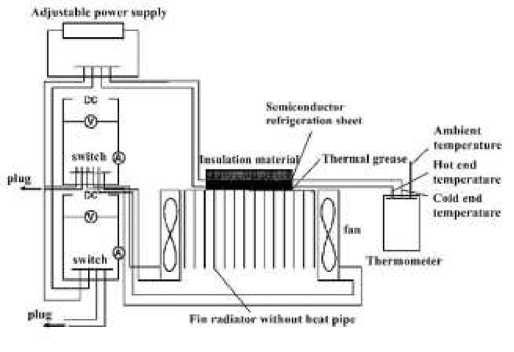
Figure 1. Radiator without heat pipe heat dissipation test device
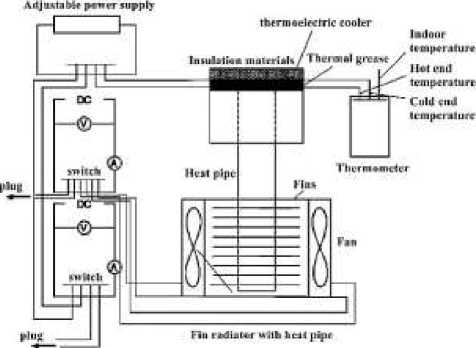
Figure 2. The radiator has a heat pipe heat dissipation test device
The test device for monolithic semiconductor heat dissipation without heat pipe for heat sink is shown in Figure 1. The hot end of the semiconductor cooling sheet is in contact with the aluminum fin heat sink without heat pipe through thermal conductive glue, and a fan is used for forced convection heat dissipation. In order to more accurately measure the temperature of the cold end, aluminum foil thermal insulation cotton with a small thermal conductivity is used for thermal insulation. The voltage of the semiconductor cooling sheet and the fan is provided by the DC power supply, and the input current of the semiconductor cooling sheet is adjusted through the adjustable power supply module. The radiator has a heat pipe. The principle of heat dissipation is shown in Figure 2. The evaporation section of the heat pipe is close to the hot surface of the semiconductor refrigeration sheet, and the condensing section is equipped with fins and dual fans are used for forced convection heat dissipation. Except for the radiator, the radiator has a heat pipe heat dissipation test device, and the other design parts are the same as the radiator without a heat pipe heat dissipation test device. The three-dimensional model is shown in Figure 3.
Insulation layer
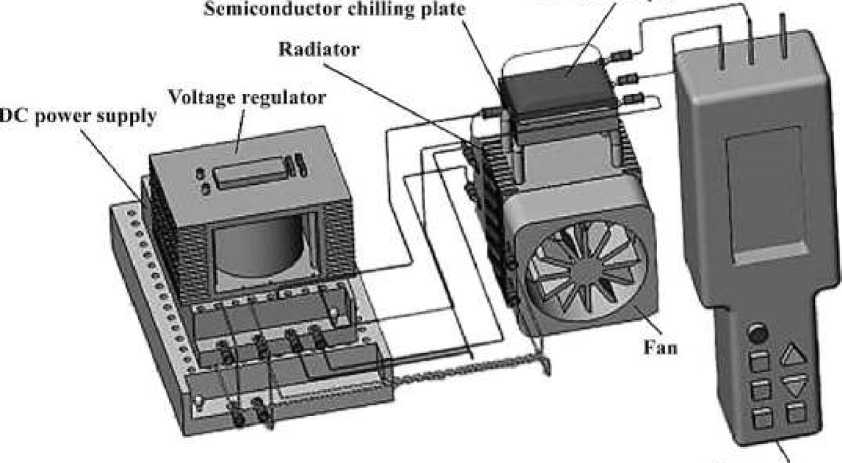
Thermometer
Figure 3. Three-dimensional model diagram of the experimental device
The test is carried out indoors, using air conditioning to adjust the indoor temperature to a fixed temperature, and using the test device shown in Figures 1 and 2, the model TEC1-12705 and model TEC1-12706 semiconductor refrigeration chips were tested for heat dissipation without heat pipes and heat dissipation with heat pipes for heat sinks, respectively. The input voltage of the hot-end forced convection cooling fan is fixed, and the input current of the semiconductor refrigeration chip is changed by a power supply voltage regulator, and the temperature tester is used to measure the temperature of the cold end under different input currents over time, and the temperature of the cold end under stable operating conditions.
At the same ambient temperature, this test used different input currents, under the condition that the radiator has no heat pipe and the radiator has a heat pipe, TEC1-12705 and TEC1-12706 two different types of monolithic semiconductor refrigeration chips were tested and tested, and the cold terminal temperature was collected. Data on the change of time under different currents. The temperature of the semiconductor refrigeration sheet TEC1-12705 varies with the current as shown in Figure 4. The temperature of the semiconductor refrigeration sheet TEC1-12705 varies with the current as shown in Figure 5.
The minimum temperature and stable temperature of the corresponding input current under stable operation of the radiator without heat pipe are shown in Table 1. The minimum temperature
Бюллетень науки и практики / Bulletin of Science and Practice Т. 9. №6. 2023 and stable temperature of the corresponding input current under stable operating conditions of the radiator with a heat pipe are shown in Table 2.
Figure 4 (a) shows the temperature of the cold end of the TEC1-12705 semiconductor refrigeration sheet over time and the input current under the condition that the radiator has no heat pipe to dissipate heat. The results show that the temperature of the cold end of the semiconductor can stabilize after a period of time under any input current; combined with Table 1, when the current is less than 2A input, the cold end temperature drops over time until it stabilizes, and when the input current is greater than 2A, the cold end temperature first drops to a minimum temperature and then rises, and finally the temperature also tends to stabilize; As can be seen from Figure 4 (c), the cold end temperature drops to a minimum temperature and then rises, and finally the temperature also tends to stabilize; As can be seen from Figure 4 (c), the cold end temperature drops to a minimum temperature and then rises, and finally the temperature also tends to stabilize; The final stable temperature of the terminal decreases first and then increases as the input current increases. The minimum temperature is -4.60С, and the corresponding input current is 2.8A.
—•—0.4A 0.8A 1.2A 1.6A —•— 2A —•—2.4A —*— 2.8A —♦—3.2A ■ 3.6A
o^
н
03 10
75 0
С 2 -5 -10 -10 0 5 10 20 25 30 40 60 80 100 120 140 160 -•— 0.4A • 0.8A —•—1.2A —•— 1.6A • 2A • 2.4A. —*—2.8A —♦—3.2A ■ 3.6A Time t/s (b) radiator with heat pipe change of cold end temperature over time Time t/s (a) radiator without heat pipe change of cold end temperature over time —•— Hot end temperature T_h1/℃ • Cold end temperature T_c1/℃ Temperature difference ∆t1 (c) radiator without heat pipe under stable working conditions the temperature of the hot and cold terminal changes with the current the hot and cold terminal changes with the current Hot end temperature T_h2/℃ —•— Cold end temperature T_c2/℃ Temperature difference ∆t2 (d) radiator with heat pipe under stable working conditions the temperature of the hot and cold terminal changes with the current the hot and cold terminal changes with the current Figure 4. TEC1-12705 semiconductor cooling chip hot end heat dissipation under different currents —•— 0.4A —•—0.8A 1.2A 1.6A —•— 2A. -•- 2.4A —*— 2.8A —♦— 3.2A * 3.6A Time t/s —•—0.4A 0.8A 1.2A 1.6A —•—2A —•—2.4A -*— 2.8A. —♦—3.2A ■ 3.6A Time t/s (a) radiator without heat pipe change of cold end temperature over time —•— Hot end temperature T_h1/℃ —•— Cold end temperature T_c1/℃ —•— Temperature difference ∆t1 Current I/A (b) radiator with heat pipe change of cold end temperature over time —•— Hot end temperature T_h2/℃ —•— Cold end temperature T_c2/℃ —•— Temperature difference ∆t2 Current I/A (c) radiator without heat pipe under stable working conditions the temperature of the hot and cold terminal changes with the current the hot and cold terminal changes with the current (d) radiator with heat pipe under stable working conditions the temperature of the hot and cold terminal changes with the current the hot and cold terminal changes with the current Figure 5. TEC1-12706 semiconductor cooling chip hot end heat dissipation under different currents Figure 4(b) shows the TEC1-12705 model semiconductor refrigeration sheet under the condition that the radiator has a heat pipe to dissipate heat, the cold terminal temperature changes over time and the input current. It can be seen from the figure that under any input current, the cold terminal temperature continues to decrease over time, and it tends to stabilize after 80s; as can be seen from Figure 4(d), the final temperature of the semiconductor cold terminal decreases first and then increases with the increase of the input current, the minimum temperature is -5.30С, and the corresponding input current is 3.6A. Figure 5 (a) shows the changes of the cold terminal temperature over time and the input current of the TEC1-12706 semiconductor refrigeration sheet under the condition that the radiator has no heat pipe to dissipate heat. The test results show that the cold terminal temperature can stabilize after a period of time under any input current; combined with Table 1, when the current input is less than 2.8A, the cold terminal temperature drops over time until it stabilizes, and when the input current is greater than 2.8A, the cold terminal temperature first drops to a minimum temperature and then rises, and finally the temperature tends to stabilize; from Figure 5 (c) It can be seen that the final stable temperature of the semiconductor cold terminal decreases first and then increases with the increase of the input current. The minimum temperature is -8.20С, and the corresponding input current is 3.6A. Figure 5(b) shows the TEC1-12706 model semiconductor refrigeration sheet under the condition that the radiator has a heat pipe to dissipate heat, the temperature of the semiconductor cold terminal changes over time and the input current. As can be seen from the figure, the temperature of the cold terminal decreases over time under any input current, and it tends to stabilize after 70s; as can be seen from Figure 5(d), the final temperature of the cold terminal decreases with the increase of the input current, the minimum temperature is -8.90С, and the corresponding input current is 3.6A. THE TEMPERATURE OF THE COLD END OF THE RADIATOR WITHOUT HEAT PIPE COOLING EXPERIMENT Table 1 Name Parameter Numerical value Current I/A 0.4 0.8 1.2 1.6 2.0 2.4 2.8 3.2 3.6 TEC1- 12705 Min temperature at the cold end T c1/T 14.1 8.6 2.7 -0.8 -3.4 -4.4 -4.6 -3.4 -3.3 Stable cold end temperature T c2/0C 14.1 8.6 2.7 -0.8 -3.2 -3.6 -2.6 -1.7 3.3 TEC1- 12706 Min temperature at the cold end T c1/C 14.7 10.1 4.6 -0.6 -3.7 -6.4 -7.5 -7.6 -8.2 Stable cold end temperature T_ c2/C 14.7 10.1 4.6 -0.6 -3.7 -6.3 -7.1 -5.7 -3.3 Table 2 THE TEMPERATURE OF THE COLD END OF THE RADIATOR WITH HEAT PIPE COOLING EXPERIMENT Name Parameter Numerical value Current I/A 0.4 0.8 1.2 1.6 2.0 2.4 2.8 3.2 3.6 TEC1- 12705 Min temperature at the cold end T c1/C 13.8 8.2 2.6 -0.9 -3.5 -4.4 -4.7 -5.1 -5.3 Stable cold end temperature T c2/0C 13.8 8.2 2.6 -0.9 -3.5 -4.4 -4.5 -3.5 -2.6 TEC1- 12706 Min temperature at the cold end T c1/C 14.6 9.8 4.4 -0.8 -3.9 -6.6 -7.6 -8.6 -8.9 Stable cold end temperature T_ c2/C 14.6 9.8 4.4 -0.8 -3.9 -6.6 -7.6 -7.8 -6.6 As can be seen from Figures 4 and 5, the input current is 0~3.6A. The same type of semiconductor refrigeration sheet has a heat pipe in the radiator to dissipate heat. The minimum temperature of the cold end can be obtained lower than that of the heat pipe without heat pipe, and the corresponding operating current is greater. This is because the heat pipe has a greater heat flow density and improves the heat dissipation intensity of the hot end, so the minimum temperature of the cold end is lower. As can be seen from Figures 4 (a) and 5(a), when the operating current reaches a certain level, the temperature of the cold terminal changes over time, first decreasing, then increasing, and finally stabilizing. This is because under smaller current conditions, the heat generated by the hot end is small, and the heat dissipation of the radiator without a heat pipe can take away most of the heat in time, and the heat transmitted to the cold end in the form of heat conduction is small, and the cooling capacity of the cold end is less than the thermal conductivity of the hot end, so in the case of low current input, the temperature of the cold end decreases over time, the temperature of the cold end continues to decrease, the temperature difference between the hot and cold ends increases, and the heat transmitted through the hot end to the cold end increases, while the temperature of the cold end continues to decrease, when the heat transmitted through the hot end is equal to the cooling capacity of the cold end, then the temperature reaches stability. However, when the working current increases to a certain extent, the temperature of the cold end quickly decreases to a certain value under the corresponding working current. At this time, the heat flow density of the finless heat pipe forced convection for heat dissipation is small, and the heat dissipation rate is less than the heat production rate, resulting in a large temperature difference between the hot and cold ends during transients. The accumulated heat is transmitted to the cold end in the form of thermal conductivity. The heat transfer is greater than the cooling capacity of the cold end, so that the temperature of the cold end rises, and after the temperature of the cold end rises, the temperature difference between the hot and cold ends decreases, and the heat transmitted from the hot end to the cold end is reduced. When the heat absorbed by the cold end is equal to the heat conduction of the hot end, then The temperature is stable. As can be seen from Figures 4 (b) and 5(b), under the same current, the temperature of the cold end of the semiconductor refrigeration sheet gradually decreases. This is because the heat flow density of the heat pipe radiator is large, the heat dissipation effect is good, and the temperature of the hot end rises slowly. In this process, the amount of heat generated by the cold end of the semiconductor is greater than the heat from the hot end to the cold end, so the temperature of the cold end continues to decrease. However, as the temperature difference between the hot and cold ends increases, the heat conduction from the hot end to the cold end increases. At the same time, as the temperature of the cold end decreases, the amount generated also decreases. When the cooling capacity is reduced to equal to the increased heat conduction, the temperature of the cold end reaches stability at this time. Analysis From Figures 4 (b) and 5(b), it can be seen that the temperature of the cold end of the radiator is gradually reduced under the forced convection of the heat pipe and any current input conditions, but the temperature of the cold end of the high-power TEC1-12706 semiconductor refrigeration sheet decreases with the increase of current, and the temperature of the cold end of the low-power TEC1-12705 semiconductor refrigeration sheet increases first and then decreases with the increase of current. This is because, as the input current increases, the heat generated by the high-power power semiconductor refrigeration sheet increases, but when it increases to the maximum value, the heat flow density and structural shape of the radiator can take away most of the heat generated, which has little effect on the temperature of the cold end. The hot end of the low-power semiconductor refrigeration sheet generates more heat than that of the high-power semiconductor refrigeration sheet. When the working current reaches a certain value, the heat accumulated at the hot end is large, and the heat flow of the heat pipe radiator is limited, and most of the heat cannot be dissipated in time. The influence on the temperature of the cold end is prominent, resulting in the temperature of the cold end cannot continue to decrease as the current increases. The minimum temperature of the cold end obtained by testing a single semiconductor chip is relatively limited. In order to obtain a lower cooling temperature, this paper designs a two-stage cooling device that separates the current input and uses the cooling capacity of the cold end of one semiconductor to dissipate the heat of the hot end of the other semiconductor, and conducts experimental research by adjusting the input current. In this article, TEC1-12706 and TEC1-12706, TEC1-12706 and TEC1-12705 were selected for the combination test of two sets of models. From the previous four test conditions, it can be seen that the TEC1-12706 semiconductor refrigeration sheet adopts a radiator with a heat pipe to force convection to dissipate heat. The lowest temperature obtained is -8.9℃, corresponding to the input current of 3.6A. Therefore, in the two sets of tests, the cooling capacity of the cold end of the working condition is used as the radiator of another semiconductor refrigeration sheet. In order to distinguish the semiconductor sheet, the semiconductor sheet used as the heat sink is referred to as TEC1-12706 semiconductor sheet A, and the other sheet is referred to as semiconductor sheet B as the cooling end. The cold end face of TEC1-12706 semiconductor sheet A is close to the hot end face of semiconductor sheet B, and the cold end of semiconductor sheet B is insulated at the same time. The input current of the two semiconductor chips is adjusted by the voltage regulating module, and the temperature of the cold terminal of semiconductor chip B is measured with the current. The test principle and device are shown in Figure 6. Figure 6. Experimental device of radiator with heat pipes for two-stage refrigeration heat dissipation A two-stage refrigeration test was performed on the combined semiconductor cooling sheet of TEC1-12706 and TEC1-12706. At the beginning of the test, the cooling fan was turned on and the input current was adjusted so that the operating current of the semiconductor sheet A was 3.6A. The temperature of the cold end of the semiconductor cooling sheet B was measured, and then the voltage regulator adjusted the input current of the cooling sheet B starting from 0, each time the current is adjusted, the temperature of the cold end of the semiconductor sheet B will change, and the corresponding temperature will be measured until it is stable. The test results are shown in Figure 7(a). The temperature of the cold terminal of semiconductor chip B decreases first and then increases as its input current increases. The minimum temperature is -35.60C and the corresponding input current of semiconductor chip B is 1.6A. This is because at low current transmission, the cooling capacity of semiconductor sheet A is greater than the heat dissipation of semiconductor sheet B, but as the input current increases, the heat dissipation of semiconductor sheet B increases, resulting in the cooling effect deteriorates and the temperature rises. In order to determine the best operating current combination corresponding to the lowest temperature, this paper further tested the input current of semiconductor chip B to 1.6A remained unchanged, and the semiconductor B current rose from 0.4A to 3.6A. The results are shown in Figure 7(b). As the input current of semiconductor chip A increases, its temperature gradually decreases. TEC1-12706 1.6A +TEC1-12706 -5 -10 -15 -20 -35 -40 -25 -30 Current I/A (a) The maximum input current is maintained at the cooling terminal (b) Working conditions when the input current of the cooling terminal gradually increases cold end of two-stage refrigeration of TCE1-12706 Figure 7. The temperature change at the semiconductor chip -10 о -15 -20 CD -25 -30 -35 TEC1-12705 1.6A + TEC1-12706 -0.4 0 0.4 0.8 1.2 1.6 2 2.4 2.8 3.2 3.6 -40 Current I/A (a) The maximum input current is maintained at the cooling terminal (b) Working conditions when the input current of the cooling terminal gradually increases Figure 8. The temperature change at the cold end of two-stage refrigeration of TEC1-12706 and TEC1-12705 semiconductor chip The input current corresponding to the lowest temperature is 2.8A and 3.2A, and the lowest temperature is -36.80C, and then rises. The temperature will drop slightly because, when the current input of semiconductor chip A decreases, under such a combination of operating conditions, the cooling capacity increases, and the heat at the hot end of semiconductor chip B increases, causing the temperature at the cold end of semiconductor chip B to drop. At the same time, the cold end of the semiconductor sheet A is the hot end of the semiconductor sheet B. Under the guarantee of heat dissipation capacity, the hot end temperature of the semiconductor sheet B is lower than the hot end temperature of the monolithic semiconductor heat dissipation test, so that the minimum cold end temperature is lower than the minimum cold end temperature of the monolithic semiconductor heat dissipation. The same method was used to conduct two-stage refrigeration tests on TEC1-12706 and TEC1-12705 semiconductor chips. The test results showed that the cold end temperature change trend was similar to the two-stage refrigeration test of TEC1-12706 semiconductor refrigeration chips, as shown in Figure 8. Under the initial operating conditions of the same input current of 3.6A, the cold terminal of TEC1-12706 semiconductor A dissipates heat to the hot terminal of semiconductor B. When the input current of TEC1-12705 semiconductor B is 1.6A, the minimum temperature of the cold terminal is -33.20С, which is higher than the minimum temperature of the cold terminal of TEC1-12706 semiconductor B with an input current of 1.6A is -35.60С. The main reason is that under the same hot terminal heat dissipation, the heat dissipation capacity of the hot terminal of the low-power semiconductor refrigeration chip is large, which restricts the temperature of the cold terminal. Further reduced. Under the combination of TEC1-12706 input current of 2.8A and TEC1-12705 input current of 1.6A, the minimum temperature obtained is -33.20С. The minimum temperature obtained is higher than the temperature obtained by the two-piece TEC1-12706 two-stage refrigeration test. The test results show that the use of separate current input for two-stage refrigeration can significantly reduce the cold-end temperature, thereby increasing the operating temperature difference of the semiconductor refrigeration sheet. At the same time, the cold-end temperature can reach the lowest under the best combination of input current conditions, and the higher the cooling power, the lower the cold-end temperature obtained by the two-stage refrigeration of the semiconductor refrigeration sheet. Conclusion 1. The heat sink has no heat pipe to dissipate heat. TEC1-12705 and TEC1-12706 semiconductor types have a small input current, and their cold terminal temperature decreases over time and finally tends to stabilize. When the input current reaches a certain value, the cold terminal temperature decreases over time and then increases, and finally reaches stability; The stable temperature of the cold terminal of the two types of semiconductor decreases first and then increases with the input current. 2. The heat sink has a heat pipe to dissipate heat as the input current increases. The stable temperature of the cold end of the TEC1-12705 semiconductor decreases first and then increases, while the temperature of the cold end of the TEC1-12705 semiconductor decreases. At a certain input current, the cold terminal temperature of the two types of semiconductor decreases with the increase of time. 3. The radiator has no heat pipe to dissipate heat. The minimum temperature of TEC1-12705 is -4.50С, corresponding to a current of 2.8A, and the minimum temperature of TEC1-12706 is -8.20С, corresponding to a current of 3.6A. The radiator has a heat pipe to dissipate heat. The minimum temperature of TEC1-12705 is -5.30С, corresponding to a current of 3.6A, and the minimum temperature of TEC1-12706 is -8.90С, corresponding to a current of 3.6A. Obviously, the radiator adopts a heat pipe to dissipate heat, which improves the heat dissipation conditions and reduces the temperature of the cold end. 4. Test and analyze the input current and heat dissipation conditions of the lowest cold terminal temperature of different types of monolithic semiconductor refrigeration chips, and under corresponding operating conditions, a two-piece TEC1-12706 semiconductor refrigeration chip is used for two-stage refrigeration. Under the combination of input current of 3.2A and 3.6A, the cold terminal temperature can reach -36.80С. Tests have shown that dissipating heat through the cold end of the semiconductor and the hot end of the other semiconductor can greatly reduce the temperature of the cold end, which improves the working temperature difference of the semiconductor refrigeration sheet. The higher the cooling power, the lower the cold end temperature can be obtained by two-stage refrigeration of the semiconductor refrigeration sheet.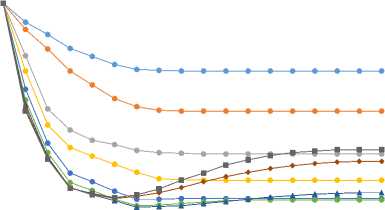
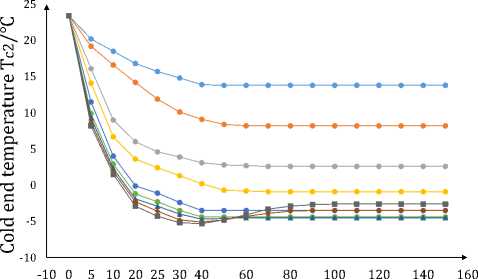
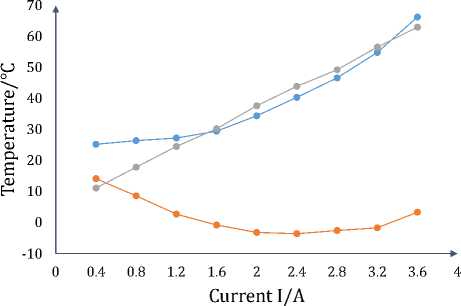
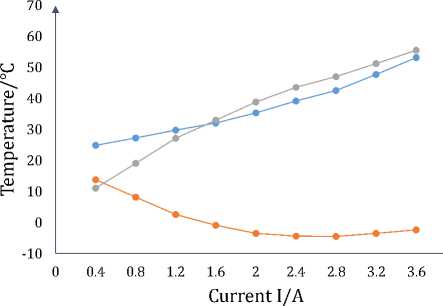
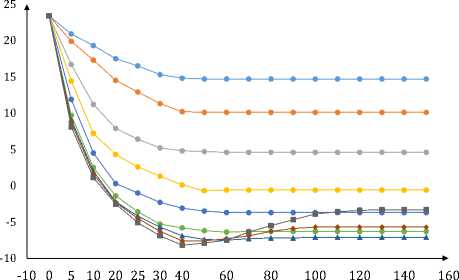
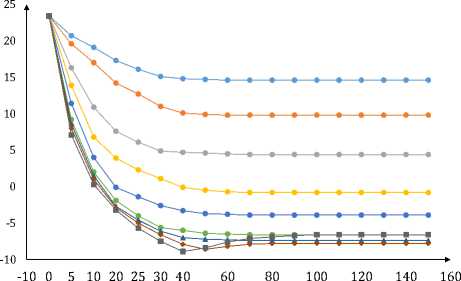
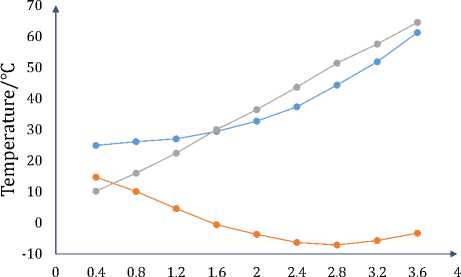
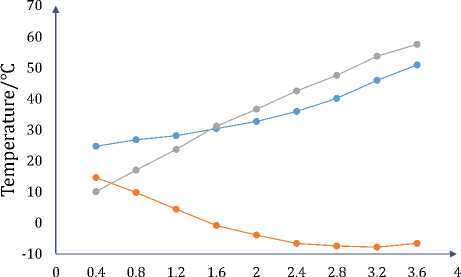
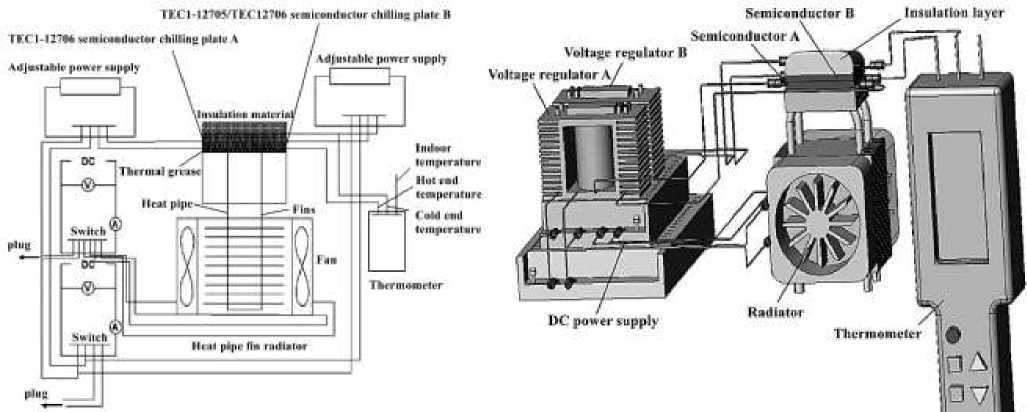
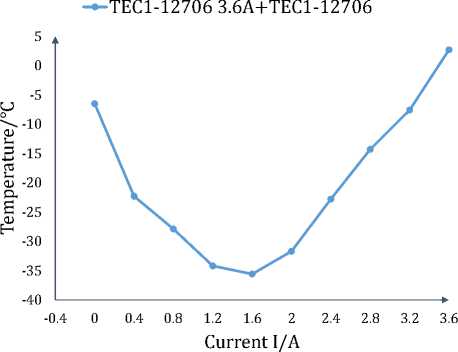
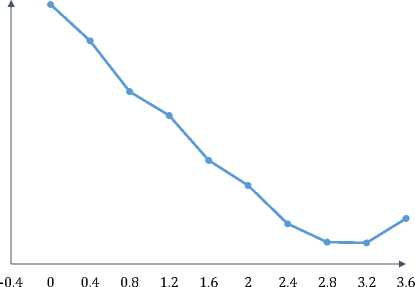
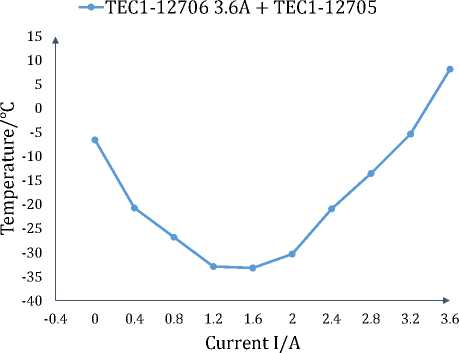
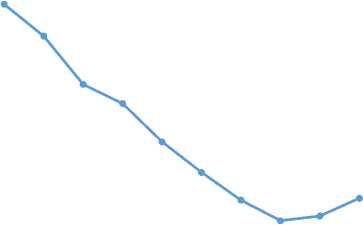
Список литературы Experimental research on heat dissipation at the hot end of semiconductor refrigeration chips
- Xie, L., & Tang, G. F. (2008). The development and application of semiconductor refrigeration technology. Contamination Control & Air-Conditioning Technology, 1, 68-71.
- Meng, J. H., Wang, X. D., & Zhang, X. X. (2013). Transient modeling and dynamic characteristics of thermoelectric cooler. Applied energy, 108, 340-348. https://doi.org/10.1016/j.apenergy.2013.03.051
- Sun, Z., Huang, X., & Liu, J. (2014). Design of Split Evaporative Air Conditioner of Evaporative Cooling and Semiconductor Refrigeration. In Proceedings of the 8th International Symposium on Heating, Ventilation and Air Conditioning: Volume 2: HVAC&R Component and Energy System (pp. 589-599). Springer Berlin Heidelberg. https://doi.org/10.1007/978-3-642-39581-9_58
- Ohara, B., Sitar, R., Soares, J., Novisoff, P., Nunez-Perez, A., & Lee, H. (2015). Optimization strategies for a portable thermoelectric vaccine refrigeration system in developing communities. Journal of Electronic Materials, 44, 1614-1626. https://doi.org/10.1007/s11664-014- 3491-9
- Su, Y., Lu, J., & Huang, B. (2018). Free-standing planar thin-film thermoelectric microrefrigerators and the effects of thermal and electrical contact resistances. International Journal of Heat and Mass Transfer, 117, 436-446. https://doi.org/10.1016/j.ijheatmasstransfer.2017.10.023
- Huang, Z., & Zhang, H. (2017). Reviews of semiconductor refrigeration technology. Non- Ferrous Metal Mater. Eng, 2, 106-111.
- Zaferani, S. H., Sams, M. W., Ghomashchi, R., & Chen, Z. G. (2021). Thermoelectric coolers as thermal management systems for medical applications: Design, optimization, and advancement. Nano energy, 90, 106572. https://doi.org/10.1016/j.nanoen.2021.106572
- Gao, Y. W., Shi, C. L., & Wang, X. D. (2019). Numerical analysis for transient supercooling effect of pulse current shapes on a two-stage thermoelectric cooler. Applied Thermal Engineering, 163, 114416. https://doi.org/10.1016/j.applthermaleng.2019.114416
- Zhou, X. F., Miao, X. P., Yang, J., & Jiang, F. (2015). Experimental Study on Effect of Meteorologic Parameters on Evaporative Cooling System Performance. In Advanced MaterialsResearch (Vol. 1070, pp. 1998-2001). Trans Tech Publications Ltd. https://doi.org/10.4028/www.scientific.net/AMR.1070-1072.1998
- Pang, Y. F. (2016, August). The theoretical analysis and experimental research on the optimal condition of semiconductor refrigeration. In IOP Conference Series: Earth and Environmental Science (Vol. 40, No. 1, p. 012013). IOP Publishing. https://doi.org/10.1088/1755-1315/40/1/012013
- Zhang, B., & Wang, Y. (2014). An experimental investigation on a novel liquid thermoelectric cooling device. CIESC Journal, 65(9), 3441-3446.
- Xu, Y., Tan, G., Guo, X., & Ping, X. (2017). Energy Consumption of Passenger Compartment Auxiliary Cooling System Based on Peltier Effect (No. 2017-01-0155). SAE Technical Paper. https://doi.org/10.4271/2017-01-0155
- Astrain, D. E., Vián, J. G., & Domınguez, M. (2003). Increase of COP in the thermoelectric refrigeration by the optimization of heat dissipation. Applied Thermal Engineering, 23(17), 2183-2200. https://doi.org/10.1016/S1359-4311(03)00202-3
- Yan, Q., & Kanatzidis, M. G. (2022). High-performance thermoelectrics and challenges for practical devices. Nature materials, 21(5), 503-513. https://doi.org/10.1038/s41563-021-01109-w

